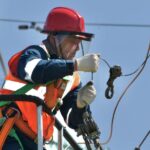By: Maria Williams
Eleanor Roosevelt once said: “Understanding is a two-way street.” This quote emphasizes that both parties must engage, listen, and share their perspectives to develop mutual understanding. It applies to personal relationships as well as professional environments where there are many communication barriers.
Unknown to many, effective communication is less about delivering a message and more about establishing a connection. Elaine A. Clark, one of the leading experts in voiceover and communication, states that when speakers share not only the polished parts of their experience but also the vulnerabilities, fears, and setbacks, they build a bridge of understanding. This bridge, founded on shared human experiences, allows the audience to relate more personally.
It’s worth noting, however, that constructing this bridge requires vulnerability—a trait many struggle with due to the brain’s protective mechanisms. The amygdala, a brain structure that controls fear and anxiety, can affect one’s ability to be vulnerable. When activated, it triggers the fight-or-flight response and causes speakers to feel anxious or defensive. Emotional walls then tend to grow between the speaker and the audience.
“Speakers then need to check in with their emotions and determine the motivation behind their message before communicating,” says Clark. Doing so helps ensure the message they deliver is honest and relevant. The seasoned professional has understood this notion over decades of exploring how to shorten the distance between speakers and their audiences. Clark developed a unique methodology to bridge this gap after a mundane incident.
She recalls: “I remember my husband and I shopping for a new washer and dryer. The first store directed us to a sales trainee who couldn’t respond to our questions besides the ones in their script. The disconnect is frustrating. We moved to a different store and talked to a seasoned salesperson. They immediately understood what we needed and provided a unique solution.”
This incident made Clark realize that effective communication demands reading between the lines, understanding an audience’s unique needs, and adapting accordingly. The trainee in the first store followed protocol but failed to connect. Meanwhile, the experienced salesperson built a bridge by recognizing the couple’s concerns and providing personalized advice.
Clark developed her approach to communication, prioritizing two critical elements—needs and truths. She advises assessing one’s emotional and mental state before speaking: “Are you anxious, distracted, or overwhelmed? Your emotions can bleed into your message and distort it.” She recommends practicing grounding techniques like mindful breathing so speakers can anchor themselves in the present. Doing so will help with delivering an intentional message.
The communication coach adds, “If the message you want to deliver is about unity, for example, but you’re feeling insecure. Your insecurity might influence how the message is received. This can lead to confusion or disconnection, so you must align your message with your purpose by checking in with your needs.”
Truth, the other element in effective communication, requires vulnerability. As mentioned earlier, some speakers avoid opening up because the amygdala warns them about the risks of oversharing. Clark states that individuals can present their truths, whether personal experiences, emotions, or insights if they monitor themselves. Self-monitoring entails acknowledging and reframing vulnerability as a strength and not a weakness.
Clark also stresses the importance of understanding an audience’s needs and truths. Audiences have expectations and desire to be engaged, understood, and entertained. A speaker who fails to read the room risks losing their audience’s attention, similar to what happened to the sales trainee in Clark’s washer-and-dryer story.
“Be attentive to people’s reactions,” Clark remarks. “Ask yourself: ‘Are they leaning in with interest or disengaging with yawns and crossed arms?’ Adjust during the presentation based on how your audience responds to you.” The coach notes that even something as simple as a well-placed catchphrase or a tone shift can recapture attention and engagement.
Overall, this two-way communication flow is important to maintaining the bridge’s strength. Clark delves more into her communication methodology in her highly anticipated book Speak to Achieve: Strengthen Your Communication Skills to Build Connection, Deepen Trust, Captivate Audiences, and Achieve Results.
Readers can expect to better understand how to align their needs with their audience, embrace vulnerability, and create lasting connections through authentic communication. The author provides practical strategies for self-monitoring, audience engagement, and adapting to various communication challenges. The book is bound to be a valuable resource for anyone looking to improve their public speaking and interpersonal communication skills.
Published By: Aize Perez

















